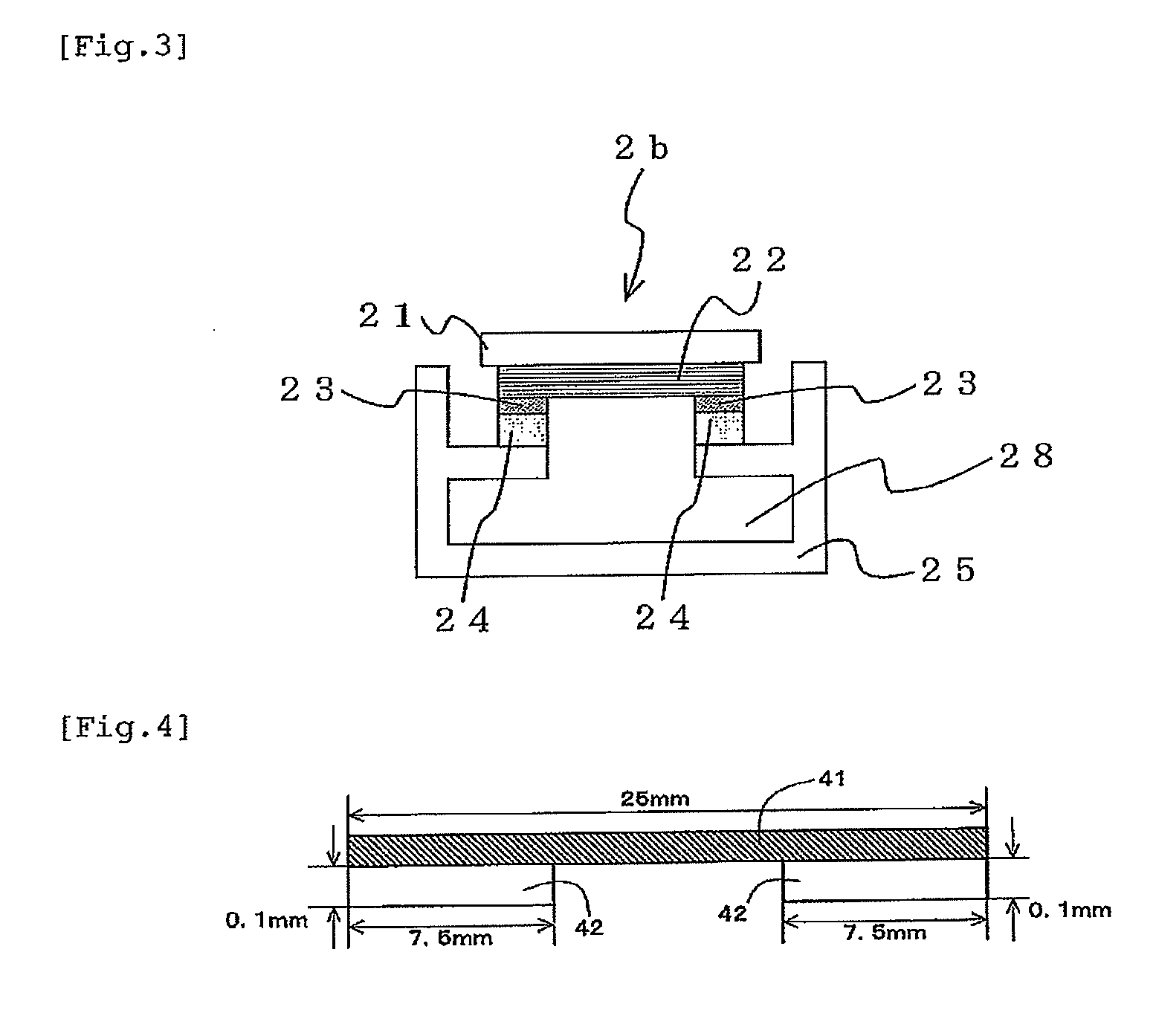Electrically conductive resin foam
a technology of conductive foam and conductive foam, which is applied in the direction of synthetic resin layered products, non-conductive materials with dispersed conductive materials, film/foil adhesives, etc., can solve the problems of deteriorating foam flexibility, difficult to have a sufficient thickness direction of electrical conductivity, and electrical conductive, etc., to achieve satisfactory electrical conductive and low volume resistivity
- Summary
- Abstract
- Description
- Claims
- Application Information
AI Technical Summary
Benefits of technology
Problems solved by technology
Method used
Image
Examples
example 1
[0121]In a twin-screw kneader supplied by The Japan Steel Works, LTD. at a temperature of 200° C. were kneaded 50 parts by weight of a polypropylene [melt flow rate (MFR): 0.35 gram per 10 minutes], 50 parts by weight of a polyolefin elastomer [melt flow rate (MFR): 6 grams per 10 minutes, JIS-A hardness: 79°], 10 parts by weight of magnesium hydroxide, 10 parts by weight of a carbon product (trade name “Ketjenblack EC-600JD” supplied by Ketjen Black International Company, hollow shell structure, BET specific surface area: 1270 m2 / g), and 1 part by weight of stearic acid monoglyceride. The kneadate (resin composition) was extruded into strands, cooled with water, and formed into pellets. The pellets were charged into a single-screw extruder supplied by The Japan Steel Works, LTD., and carbon dioxide gas was injected at an atmospheric temperature of 220° C. and at a pressure of 13 MPa, where the pressure became 12 MPa after injection. The carbon dioxide gas was injected in an amount ...
example 2
[0122]In a twin-screw kneader supplied by The Japan Steel Works, LTD. at a temperature of 200° C. were kneaded 50 parts by weight of a polypropylene [melt flow rate (MFR): 0.35 gram per 10 minutes], 50 parts by weight of a polyolefin elastomer [melt flow rate (MFR): 6 grams per 10 minutes, JIS-A hardness: 79°], 10 parts by weight of magnesium hydroxide, 10 parts by weight of a carbon product (trade name “Ketjenblack EC-600JD” supplied by Ketjen Black International Company, hollow shell structure, BET specific surface area: 1270 m2 / g), and 1 part by weight of stearic acid monoglyceride. The kneadate (resin composition) was extruded into strands, cooled with water, and formed into pellets. The pellets were charged into a single-screw extruder supplied by The Japan Steel Works, LTD., and carbon dioxide gas was injected at an atmospheric temperature of 220° C. and at a pressure of 13 MPa, where the pressure became 12 MPa after injection. The carbon dioxide gas was injected in an amount ...
example 3
[0123]In a twin-screw kneader supplied by The Japan Steel Works, LTD. at a temperature of 200° C. were kneaded 70 parts by weight of a polypropylene [melt flow rate (MFR): 0.35 gram per 10 minutes], 30 parts by weight of a polyolefin elastomer [melt flow rate (MFR): 6 grams per 10 minutes, JIS-A hardness: 79°], 10 parts by weight of magnesium hydroxide, 10 parts by weight of a carbon product (trade name “Ketjenblack EC-600JD” supplied by Ketjen Black International Company, hollow shell structure, BET specific surface area: 1270 m2 / g), and 1 part by weight of stearic acid monoglyceride. The kneadate (resin composition) was extruded into strands, cooled with water, and formed into pellets. The pellets were charged into a single-screw extruder supplied by The Japan Steel Works, LTD., and carbon dioxide gas was injected at an atmospheric temperature of 220° C. and at a pressure of 13 MPa, where the pressure became 12 MPa after injection. The carbon dioxide gas was injected in an amount ...
PUM
| Property | Measurement | Unit |
|---|---|---|
| volume resistivity | aaaaa | aaaaa |
| surface resistivity | aaaaa | aaaaa |
| apparent density | aaaaa | aaaaa |
Abstract
Description
Claims
Application Information
 Login to View More
Login to View More - R&D
- Intellectual Property
- Life Sciences
- Materials
- Tech Scout
- Unparalleled Data Quality
- Higher Quality Content
- 60% Fewer Hallucinations
Browse by: Latest US Patents, China's latest patents, Technical Efficacy Thesaurus, Application Domain, Technology Topic, Popular Technical Reports.
© 2025 PatSnap. All rights reserved.Legal|Privacy policy|Modern Slavery Act Transparency Statement|Sitemap|About US| Contact US: help@patsnap.com


